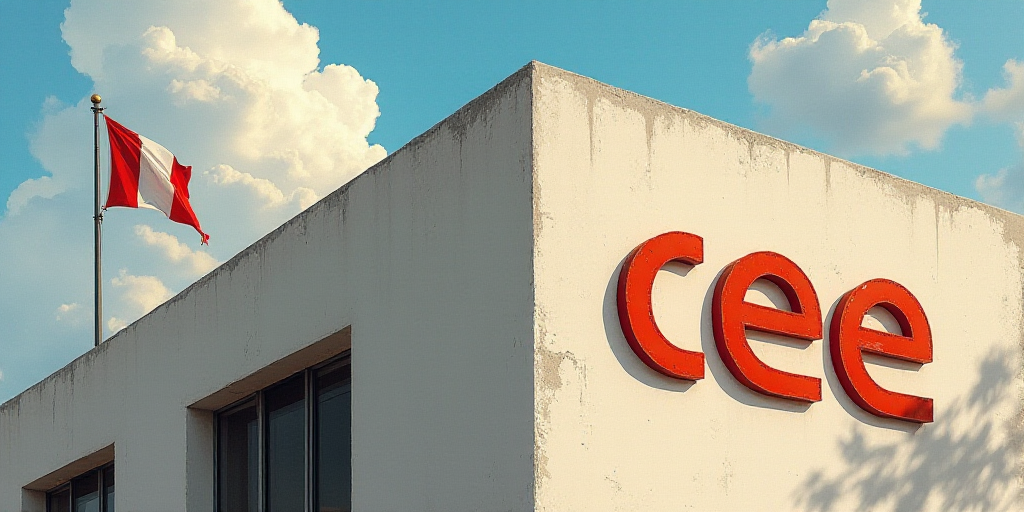Addressing Allegations of “Losses” from 2021 to 2024
In response to the information disseminated by the Mexican Institute for Competitiveness (IMCO) regarding the CFE, the Federal Electricity Commission provides the following clarification:
Regarding alleged “losses” between 2021 and 2024
The text “La reestructura de la CFE: Los riesgos de la centralización,” authored by IMCO, presents a limited view of the responsibilities of a public company like CFE. It points to “losses” while omitting that a single event, the unavailability of natural gas due to a winter storm in February 2021, accounted for 42.7% of the previous administration’s red numbers.
The economic impact of deciding not to pass on the costs of unforeseen meteorological and geopolitical events to end-users—as is the case in countries like Spain, which inspired the 2013 Energy Reform—is not quantified. This approach contrasts with the current Mexican government’s stance, which has also avoided such practices in the past.
Despite increased gas prices due to the Texas polar vortex and subsequent rises caused by the Russia-Ukraine war, the CFE adhered to its socially responsible mission since its founding. This commitment was maintained despite the financial burden of these events.
The National Power System Expansion Plan 2025-2030 has implemented measures to prevent similar scenarios from recurring. A new regulatory framework ensures CFE’s dominance, allows controlled private national and foreign participation in electricity generation, and lays the groundwork for a strengthened CFE that guarantees the reliability and security of the National Power System (NPS).
Centralized Planning and Supplier Relationships
The current administration’s centralized and binding planning ensures long-term projects are executed where the NPS requires them, including private generator participation through mixed projects that benefit both parties.
A comprehensive expansion program has been introduced, focusing on electricity generation as well as strengthening the National Transmission Network (NTN) and General Distribution Networks (GDN). This will enhance CFE’s operations, improve its financial position, and prioritize energy justice for underserved populations lacking electricity access in Mexico.
Regarding “Supplier Debts”
CFE maintains a prudent payment policy with its suppliers, reflecting cash flow management aligned with spending scheduling and a 30-day payment cycle. Strict adherence to statutory and contractual payment terms with suppliers is upheld.
The variation between June 2025 and December 2024 closure is due to operational seasonality in contract execution, increased public works activity, and purchases of goods and services, along with established payment policies to validate and schedule payments.
Expectations for 2025’s year-end estimate a reduction in supplier and contractor balances, as the associated liability aligns with the fiscal year calendar where payments historically concentrate in the last quarter.
Thanks to the 2024 Energy Reform, CFE avoided risks that could have led to its dissolution due to the fragmentation resulting from the 2013 reform aiming for privatization.
Now, CFE resumes its social mission, strengthens its value chain, and meets NPS requirements to provide continuous, reliable, sustainable, and sustentable electricity services.
Key Questions and Answers
- What are the claims made by IMCO regarding CFE’s financial situation? IMCO’s text, “La reestructura de la CFE: Los riesgos de la centralización,” alleges “losses” for the CFE between 2021 and 2024, omitting that a single event—the winter storm in February 2021—accounted for 42.7% of the previous administration’s red numbers.
- How has CFE managed its finances amidst these challenges? Despite increased gas prices due to the Texas polar vortex and subsequent rises caused by the Russia-Ukraine war, CFE adhered to its socially responsible mission. The National Power System Expansion Plan 2025-2030 has implemented measures to prevent similar scenarios from recurring.
- What is CFE’s payment policy with suppliers? CFE maintains a prudent payment policy with its suppliers, ensuring cash flow management aligned with spending scheduling and a 30-day payment cycle. Strict adherence to statutory and contractual payment terms with suppliers is upheld.
- How has the 2024 Energy Reform impacted CFE? The 2024 Energy Reform helped CFE avoid risks that could have led to its dissolution due to fragmentation resulting from the 2013 reform aiming for privatization. Now, CFE resumes its social mission and meets NPS requirements to provide continuous, reliable, sustainable, and sustentable electricity services.






